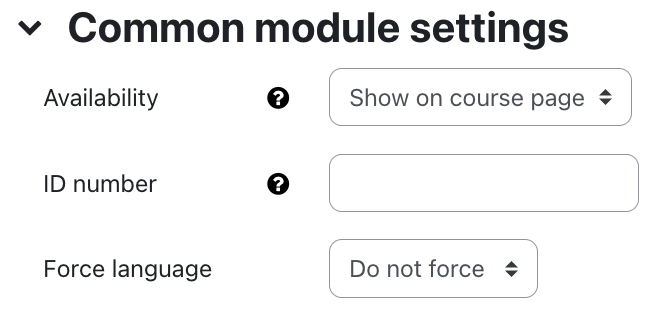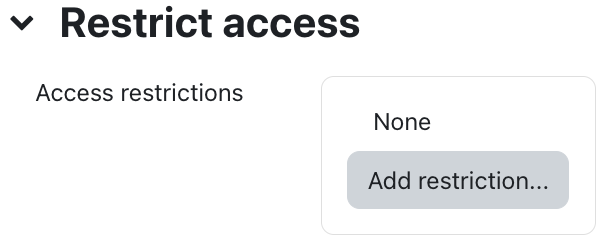Link/URL

With the working material, Link/URL managers can provide cross-references to other websites or links to external files (files stored on a server other than RWTHmoodle) in the course room.
1. Add Link/URL
- Switch the course room to edit mode using the "Edit mode" slider next to your name in the upper right corner.
- Click on the link "Create material or activity" in the course section where you want to add a file.
- Mark the checkbox at "Link/URL .

- Click on the button "Add" to create the working material "Link/URL. You will automatically be forwarded to the settings page of the element to enter the link address and configure the element.
2. Configure Link/URL
2.1. Basic Entries and Content

- Name: Give the link a name. This name will appear on the course page.
- External URL: Enter the address (URL) of the external website or file. If necessary use the button "Choose link" - the file picker will open and display repositories that provide external files (e.g. Wikimedia Commons).
- Description: Enter a short description of the link.
- Show description in the course: If you select this checkbox the above description will be displayed directly on the course page.
2.2. Presentation

- Display: Select how the external Web page is to be displayed:
- Automatic - the browser decides how to display the external source depending on its browser settings.
- Embed - the external source will be displayed within the Moodle page below the navigation bar (breadcrumb), along with the description and all blocks.
- Open - the external source is displayed in the browser window
- As a pop-up window - the external source is displayed in a pop-up window with no Moodle blocks and no Moodle navigation bar (breadcrumb).
- In frame - the external source is displayed in a frame below the Moodle navigation bar (breadcrumb), along with the description.
- New window - the external source is displayed in a new browser window with Moodle blocks and with a Moodle navigation bar (breadcrumb).
- Popup width (pixels) - enter the width of the popup window if you have selected this as the display option.
- Popup Height (pixels): Enter the height of the popup window if you have selected this as the display option.
- Display the URL name: Select this checkbox if you want the name of the link to be displayed.
- Display Description of URL: Select this checkbox if you want the link description to be displayed above the actual content.
2.3. URL variables

Please do not use these entries.
2.4. Further settings

- Availability: Select whether the file should be immediately visible to students or hidden from them.
- ID number: The ID number for the work material is used to assign a name that can be used in the "Ratings" section when calculating overall ratings. If the work material is not needed to calculate assessments, the field can remain empty.
2.5. Restrict Access

With these settings, you can attach certain conditions to the visibility and availability of the file to students. For more information, see the article Restrict Access.
2.6. Activity completion

With these settings, criteria or conditions define when an activity is considered completed (that is, successfully processed). For detailed information, see the article Activity completion settings.
2.7 Save

Clicking on "Save and go to course" will return you to the course page.
2.8 Notification about content change
The settings for the activities can be reached after creating them within the activity via the central menu navigation. Here you will find activity-specific settings and you can also save the activity directly individually.
If you subsequently make changes to the settings, activate the checkbox "Send notification of content change" to inform all participants about the new or changed activity. All participants who can access the activity receive the notification.


